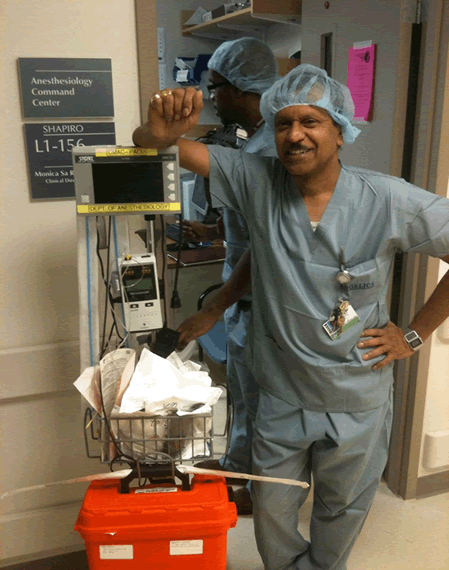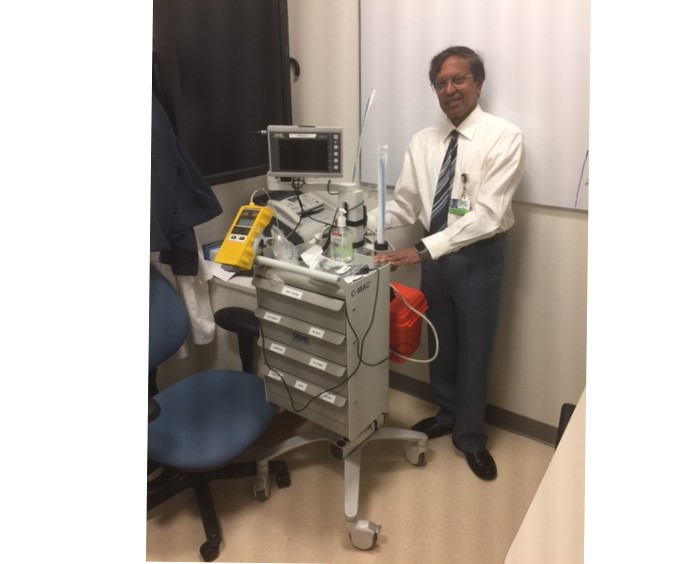CPR Mobile Code Stand
At Brigham and Women’s Hospital, Boston, MA, USA, a mobile code stand equipped with a portable capnograph follows the anesthesiologist. The capnograph unit is switched on as soon as a code call is initiated. By the time the code team reaches the code area, the capnograph unit is functionally ready. The capnograph not only confirms endotracheal intubation, but also monitors the efficacy of CPR. The code stand is also fitted with a video laryngoscope to facilitate visual intubation in difficult intubations.
CPR Mobile Code Stand

Another Version of Code Stand

Capnograms during CPR. A: blips of CO2 during CPR. The aim should be to achieve end-tidal PCO2 of 20 mm Hg. At the least, the wave form height should be above 10 to 15 mm Hg during CPR. B: A sudden raise in end-tidal CO2 indicates of return of spontaneous circulation (ROSC).


 Twitter
Twitter Youtube
Youtube









